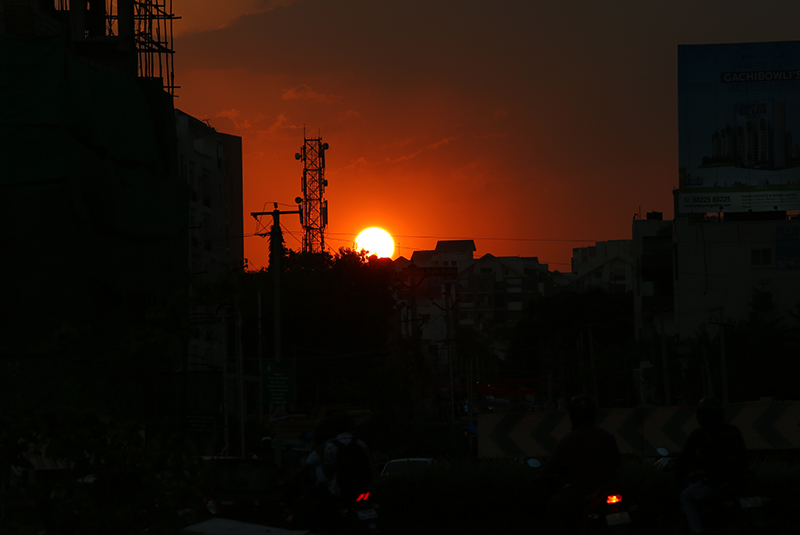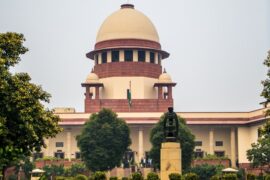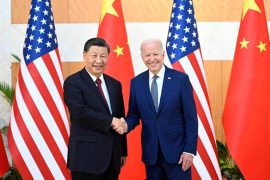Most educated professional readers will not stray further than the 2023′ summary for policy makers’ (henceforth IPCC) of three IPCC groups working on the physical science basis of climate change, on climate change impacts, adaptation and vulnerability and on the mitigation of climate change. IPCC’s work represents an immense collective effort at synthesis and co-ordination, one carried out with utmost scientific care.
It exemplifies the public accountability of science. Approved line by line by governments, it is also an act of partnership between global science and the world’s governments. As a prestigious and respected global body, IPCC has a demonstration effect on the reporting of other global and UN organisations for which it sets the bar high. But is there a summary for most of us who are never going to be policy makers or part of ‘governments’, but who are members of the other two of the three categories of climate actors identified in the report: civil society and the private sector? What is the effect of this summary being intended for policy makers?
The IPCC lays out the substance of climate change and its impacts within rigorously defined confidence limits. It is ever more dire, verging on and sometimes tipping into the catastrophic. In this brief commentary, I will not dwell much on the substance except as it affects IPCC’s ideas about policy relevance.
Despite the reductionism of the IPCC mandate in which the ecological crisis has to be reduced to climate change and climate change often to carbon dioxide equivalents, the IPCC starts by acknowledging the interdependence of climate ecosystems with biodiversity (though not with nitrogen), human societies, various forms of knowledge (pleas for epistemological plurality having reached the sanctum sanctorum) and the diversity of actors in climate action (but not ‘activism’). By its mandate, it still cannot but avoid engaging with alternative paradigms such as Rockstrom’s earth systems (2009, Nature) with their several transgressed planetary boundaries, their interactions – and their critics. Everything published has to pass scrutiny by a large number of governments which provokes the question whether there is a special globalised epistemic community making this possible.
The limited retreat from its climate change focus requires drivers other than climate change to enter the frame. How is that handled?
Structured around adaptation and mitigation, the IPCC avoids the systematic identification of non-climate change drivers of climate-related environmental change. It admits progress with adaptation as being fragmented, incremental, patchy regionally and uneven in ‘sectors’ (which have several meanings in this report). Two non-climate drivers discussed in the report involve errors by societies.
In the interests of urgent action, the IPCC has chosen to mainstream cross-generational damage from generations that procrastinate. It has also chosen to mainstream, though not to define, maladaptation (which seems to mean rational short-term responses that generate gains but which will have longer-term dysfunctions such as increasing risk, exposure and vulnerability) and ‘soft limits to adaptation’ (which point to inadequacies in finance and governance). To stop cross-generational damage, we need immediate action; to address maladaptation, we need flexible, multisectoral, inclusive, long-term planning (p19).
With respect to mitigation, another consequence of social reluctance to act is overshoot, which will have adverse and irreversible impacts. Yet 1.5 will be reached in the near term, and while the slowing of temperature depends on the speed and depth of cuts to GHGs (pp 12-13), pledges and finance are dangerously inadequate. Given this reluctance, without mitigation and increasing heat, the complexity and interactivity of climate and non-climate risks–e.g., disease, failing water systems and food shortages – increase.
Here, the risks are depicted as effects and not causes of, or inputs to, climate change, although food/agriculture are later admitted along with (air)transport and industrial processes as residual GHG-generating sectors resistant to zero C technology. These will need carbon removal methods to counter-balance their emissions and to deliver on net zero. In systems theory, causes can be effects through feedback relations, but feedback is only discussed once in relation to overshoot.
The most vulnerable people will be those in informal settlements, those with climate-sensitive livelihoods, indigenous people and those directly dependent on natural resources (pp 15). Rapid, deep and immediate mitigation pathways (pp 20) may have environmental and social synergies e.g. reforestation, soil- and blue-carbon and peat for biodiversity and livelihoods. But they also may have trade offs e.g. afforestation and biomass crops versus displaced livelihoods and threatened food security.
Is the latter a case of maladaptation or of mal-mitigation? What is to be done by the climate actors: governments, civil society and private sectors?
Here in the report, we start to confront a further series of lists whose terms depart from those of the climate models. We have already met mitigation pathways and calls for immediate planned responses. New climate-smart, climate-resilient approaches to development are introduced in several separate summaries.
The first exposition of climate-resilient development approaches appears to privilege the principles of policy agenda-forming processes: integrated, inclusive ‘development choices’ prioritising risk reduction, equity and justice. And finance and tech (p24). Then, the institutional pre-conditions for these activities are laid out: political commitment, co-ordinated policy, social and international co-operation, ecosystem stewardship, inclusive governance, knowledge diversity, technical innovation, M&E and finance – all to be targeted at regions, sectors and communities that are currently vulnerable.
Another bite at the cherry of the climate-smart model develops its objectives – low emissions, system transitions, ‘transformation’ (not defined), low climate risk, equity and justice, and ‘SDG achievement’ (p25).
A third version of the model (p28), focussed on the means of ‘system transition‘, involves low or zero emission tech, changes in demand and infrastructure, social and behavioural change, increases in technical efficiency, social protection, climate services or other services (?) and the protection and restoration of ecosystems.
As for the economy, the concepts of sectors and systems appear on p28, but while sector does not seem to mean private sector, it is not defined. Elsewhere, industrial processes seem to be a sector. Later, detailed lists describe the synergies of the model with SDGs and sustainable development (pp 27, 28-30).
System change is indeed needed at an unprecedented scale but not, according to IPCC, at unprecedented speed. However, the reasons why not must be obvious to policy makers, for they are not provided.
The IPCC had already argued in 2021 that there was little chance of further economic growth. “Some scientists stress that climate change is caused by industrial development, and more specifically, by the nature of social and economic development produced by the nature of capitalist society, which they therefore consider ultimately unsustainable” (IPCC 2021, widely cited).
What about policies for these new models and their closing window of time? How is policy classified and handled by IPCC 2023?
Not substantively but in much the same way as climate resilient modelling, through classifications of desirable or necessary conditions. These involve political commitment, multi-level governance, institutional frameworks, laws, policies and strategies, access to adequate finance and technology, the need to generalise regulatory and economic instruments to reduce GHGs – through international co-operation – and innovation systems supported by public policy (p32 et seq).
Some comments which I wish I didn’t have to make
Language
Over and above fuzzy neologisms such as inclusivity, knowledge diversity, ‘SDG achievements’ and familiar fuzzy terms such as community and justice, IPCC writes about development in an emerging theoretical code and, in so doing, supersedes decades of development economics, development studies and politics. Given the IPCC’s calls for inclusivity and diversity of knowledge, which ought to include that of social sciences, this is ironic, to say the least.
The IPCC seems to think it can address the crucial issues in actually moving from models that look theoretically (just) capable of averting disaster while dispensing with the knowledge of scientists who study societies and their politics. In doing so, the IPCC invites social scientists to translate and interpret, which this essay tries to do.
Policy for policymakers
IPCC flatters policy makers for their rationality, capacities and independence of electoral politics and other political pressures. Despite nods to informal settlements (slums) that are by definition outside the ambit of state regulation but not attributed to either civil society or the private sector in this report, the IPCC has a Weberian state in mind. Yet, the world’s informal economy is significant for the world’s climate change response. In ignoring it, in assuming Weberian rationality with aggressive powers, and setting utopian conditions for policy, the IPCC creates for itself a grand ‘escape hatch’ for scientific responsibility.
Normative policies derived from models that are, we are warned, projections from selectively available evidence–and not predictions or forecasts–are presented in a positivist fashion as actually implementable.
How else to interpret this?
‘Adaptation and mitigation, actions that prioritise equity, social justice, climate justice, rights-based approaches and inclusivity lead to more sustainable outcomes, reduce trade-offs, support transformative change and advance climate resilient development’ (p31).
This highly political but depoliticised, de-historicised technocratic consensus flies through its own escape hatch, out of the real world known to social sciences back into hard science territory.
As conditions worsen and ambition must increase or cede to despair that will be censored, so the feasibility of what is recommended declines – this is ‘policy policy’ at its most dreamy and without political preconditions except for ‘commitment’: wishful hot air drifting upwards like GHGs. It is models rather than history that are the foundation of this structure of non-responsibility. The IPCC’s contradiction is that while the individual responsibility of IPCC members is irreproachable, the collectivity is not responsible. And yet, as many social philosophers have observed, the singular is always the plural.
Taboos in politics & economy
Rather than there being elephants in the room, there are herds of winged elephants flapping their ears around the dwindling GHG budget-space in the atmosphere.
Despite there being many long and detailed lists of scenarios, strategies, pathways, options and actions, the energy and material requirements of the model are absent so that locations and conflicts over the control of energy and materials are also absent. The IPCC nods just as much towards dematerialisation as do the human development theories that form some of the background for the SDGs with which it aims to be in sync.
Among the forces shaping our contemporary world, inequality is named as an obstacle to preventing disaster, but wealth holders are named as a source of taxable resources. Private property rights, capitalism, the military-industrial complex and US imperialism are entirely absent. Unlike business schools, governments appear to be scared stiff of capitalism.
The report invokes the economy, markets (for energy, finance and capital), the private sector, private finance, business (once – and as a civil society actor) and a range of human activities. Yet it is the institution of private property and the dynamic of capital that produce and destroy its material and energetic environment (Kohei Saito, Capital in the Anthropocene, 2020).
The contradictory pressures arising from the conflict between capital and labour cannot be admitted into systems modelling. Nor can capital’s unbreakable drive to commodification, yet alternatives that reduce materials, energy and waste, such as the circular economy, get two flying mentions in the report as (apparently unproblematic) ‘circular material flows’ (p29). And Andre Gorz’s degrowth of the 1970s, let alone eco-socialism, are missing despite IPCC’s established rounds of warning about limits to growth. Can we conclude other than that the world’s governments’ science censors forbid the use of these terms?
Declaring that people directly dependent on natural resources are more at risk than the vast bulk of global society whose dependence is mediated by markets/capital, betrays an assumption that markets are superior in their efficiency and capacity to equilibrate resource scarcities, an assumption that is not well supported by much existing empirical research either on markets for petty commodity production or on the behaviour of corporate capital. Like the assumed Weberian state, this is an unacknowledged ideological assumption.
As canaries in the mine, informal settlements get three warning mentions for their vulnerability, but the global informal and criminal economies that bestride the world like a colossus and are clever at avoiding and evading state regulation do not even appear in the list of obstacles discussed below.
Since most economic theory copes poorly, if at all, with real-world power, you might argue that IPCC’s is no worse. But IPCC makes claims to policy relevance, which most readers will assume means relevance to real-world conditions.
Actually, existing political conditions for the model are absent, however. Democracy is completely unmentioned, as are fascism or socialism. Invoking a diversity of actors and institutions does not do the trick. “(M)itigation and development goals cannot be achieved through incremental changes” said the IPCC in 2021).
The urgent action called for by IPCC 2023 is not feasible, or it would have happened. It is feasible given infeasible conditions. IPCC’s demands are nothing short of revolutionary on a world scale. But revolution and the need for industrial-political revolutions are unmentionable, if not entirely unthinkable.
A set of pathways, of options (laid out in impressive detail on p27 for an IPCC classification of sectors: energy; transport; cities-settlements-infrastructure; land-sea-food-water; health; nutrition; emergency preparation and inclusive social security) and to make technology available (p28) constitute the practical implications of the climate-responsive model. For IPCC, what is needed is to be rid of the obstacles to their feasibility and availability.
What are these obstacles? To its credit, the IPCC does not shy away from listing constraints. Lack of private and citizen engagement are found on p 9. In the figure on p24, ‘conditions that constrain’ are poverty, inequality, injustice; economic, institutional, social and capacity barriers; siloed responses; lack of finance and barriers to finance and technology; plus trade-offs with SDGs.
Elsewhere on p24 we can extrapolate further obstacles: maladaptation (again), entrenched systems, and declining options to avert ecosystem degradation. But any theory of cause and effect among this spray-gunned set of obstacles is missing. So are fossil fuel interests as obstacles, or as anything other than something we can transition away from, by, for instance, removing their subsidies (which do nothing at present but grow).
Suppose it were possible to juggle these conceptually uneven categories with their varied theoretical and historical genealogies, suppose we were to ignore the effects of missing obstacles, such as path-dependent existing policies and subsidies, such as public opinion, such as the present will and preoccupations of the world’s people and such as political economy in the form of the power of vested oligopolistic business interests, of fossil fuels, of extractive capital and the MIC – then the means of negotiating with/compensating/destroying/by-passing/taxing/transforming/forming transformative alliances with IPCC’s list of constraints is still completely unaddressed.
Moreover, while the idea that such constraints can or could be removed individually or collectively may be justified by some unacknowledged theory, no evidence from history indicates that this will happen. In its absence, the same forces and institutions causing climate change and vulnerability in the first place are invoked to transform themselves and turn it around.
Finally, the overriding needs for a disciplined mandate and for consensus combined with the pressures for political assent to the text mean that few other drivers than climate change can be admitted into the analysis. They include reluctant responses, maladaptive responses, the pressing requirements of food, water and industry, certain other earth systems forces, the implications of diverse knowledge and diverse actors for policy making. But the idea that such drivers each and collectively constitute vested oppositional interests hostile to climate-resilient development is not addressed.
For a century, analysts have found that in order to narrow politically the social territory for democratic deliberation and to preserve what’s left for a technocracy, the depoliticisation of policy has had to be well organised and supported by incentives (with the work of Schmitt, Jessop, Flinders and Burnham coming to mind). In the 21st century, they frequently find that public policy makers are a set of agents whose roles are consistent with the process of depoliticisation.
Half a century ago, Bernard Schaffer argued that the careful depoliticisation of their remit ensured the perpetuation of this bureaucratic elite because the ‘problems’ for the redress of which they are responsible evidently cannot be ‘solved’ by the means they present and support. The IPCC science is complicit in this depoliticisation.
The IPCC addresses huge issues for mankind in part by ignoring social and political sciences. But, even if scientists do not ignore politics but instead demonise politics and its study as ‘polemics’ (a position I hear quite regularly expressed) and actively avoid political engagement, ‘politics cannot be exterminated’ (Schmitt, 1927).
Is there space left for critical social scientists and science and technology scholars to call out the politics of this depoliticisation and to help mobilise public opinion to demand serious and prioritised, restitutive alternatives and the realistic planning for them that might even require a rupture with capital?
-30-
Copyright©Madras Courier, All Rights Reserved. You may share using our article tools. Please don't cut articles from madrascourier.com and redistribute by email, post to the web, mobile phone or social media.Please send in your feed back and comments to [email protected]











